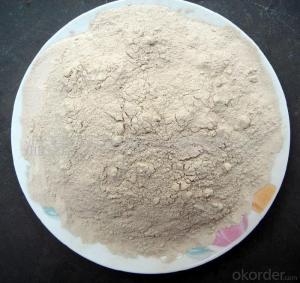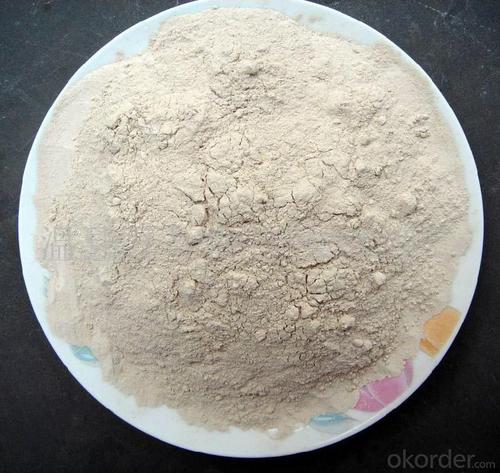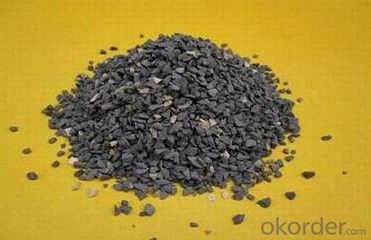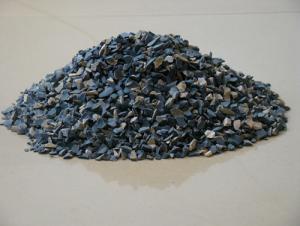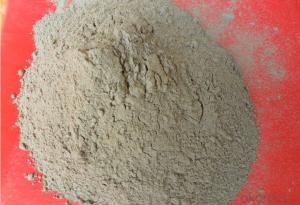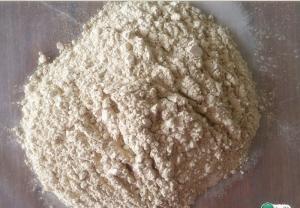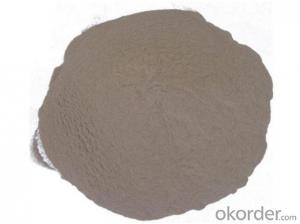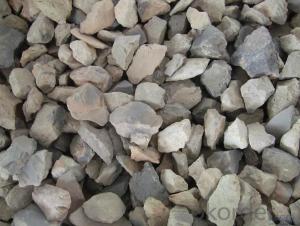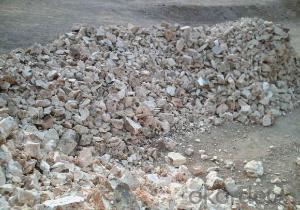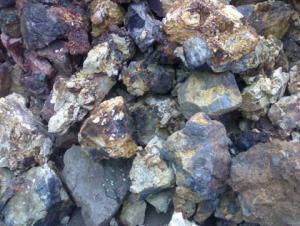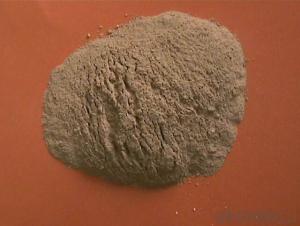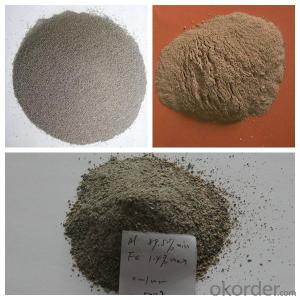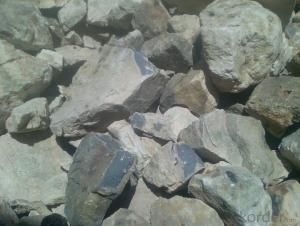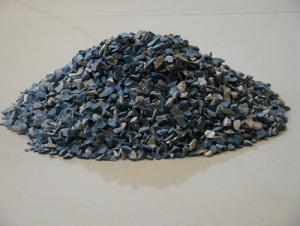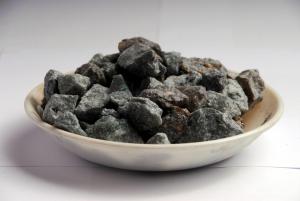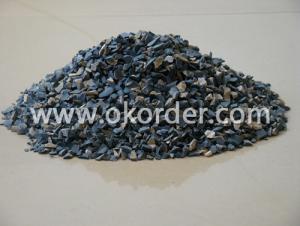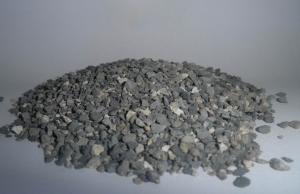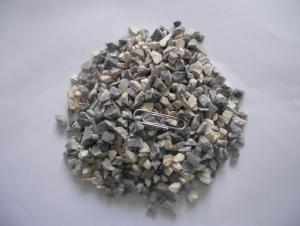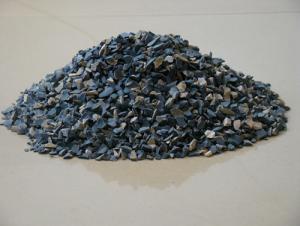Raw Materials for Refractory:China Shaft Kiln Calcined Bauxite Supplied by CNBM
- Loading Port:
- China main port
- Payment Terms:
- TT OR LC
- Min Order Qty:
- 25 m.t.
- Supply Capability:
- 20000 m.t./month
OKorder Service Pledge
OKorder Financial Service
You Might Also Like
Basic Info.
Place of Origin:Zibo, China (Mainland)
Brand Name:WANFANG
Model NO.: WF-CB-1
Production Capacity: 5, 000 MTs / month
Size: Customized
Certificate: ISO 9001:2008.
Advantages
Cost advantage (Manufacturer-Direct sale);
High cost-effective;
Good fireproof insulation;
High bulk density.
Application
Widely used in aluminium metallurgy, precision casting, refractory product, ceramic fiber, alumina cement etc .
General description
As a large and class kiln & furnace expert, we also have our own raw material mine in Shanxi which is rich in bauxite so that we have the cost advantage in the engineering procurement construction of industrial kilns & furnaces. So our company is also an experienced Bauxite manufacturer. High grade calcined bauxite is used for raw material of kinds of our own refractory products.
Physical & Chemical Index
GRADE | CHEMICAL CONTENT,% | PHYCICAL PROPERTIES | ||
Al2O3 (%) | Fe2O3 (%) | DENSITY (g/cm3) | Refractoriness (℃) | |
GAL-70 | ≥70 | ≤2.0 | ≥2.75 | >1790 |
GAL-80 | ≥80 | ≤2.0 | ≥2.90 | >1790 |
GAL-85 | ≥85 | ≤1.8 | ≥3.10 | >1790 |
Remark: We could produce various sizes according to customers’ requirements.
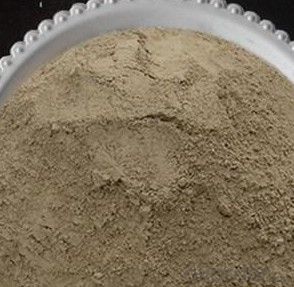
- Q: How many kinds of refractory materials are there in the EI?
- I suggest that you contribute articles to foreign SCI journals for the odds are better, and generally the articles that fill the bill will not be rejected. The traditional refractory materials can contribute to EI journal. If being rejected by EI journal, you can also contribute to Russia's journal Industrial Ceramics and Refractories. I didn't contribute to the Journal of Wuhan University of Science and Technology, the receiving cycle is almost 3 to 4 months. Though the impact factor is low, domestic EI journal is not so good, it is still SCI journal. This is my own experience, please take my advice. The best journals are the Journal of the American Ceramic Society and the Journal of the European Ceramic Society, I heard that they are not bad. But the best domestic EI refractory material journal is the Journal of The Chinese Ceramic Society. It is very long, but if it belongs to your university, it is another pair of shoes. Journals now all want to have materials about functional ceramics, and they don't want Chinese articles, if your English is not well enough, you can choose Ceramics International and Japan Ceramics but they have strict manuscripts reviewing standards.
- Q: How to divide the fire resistant level of EVB?
- 1. The thermal insulation material of level A combustion performance: Inorganic fiber spray coating, glass wool, foam glass, foamed ceramics, rock wool, foam cement and hole-closed perlite, etc. 2. combustion performance is level B1 insulation materials: Extruded polystyrene board (XPS) after special treatment / Special treatment of polyurethane (PU), phenolic aldehyde and gelatine powder polyphenyl granule 3, combustion performance is level B2 insulation material: Molded polystyrene board (EPS), extruded polystyrene board (XPS), polyurethane (PU), polyethylene (PE), etc. I hope I can help you!
- Q: What is the principal part of silicious refractory material
- Shenzhen Longgang Jiangyou Hua Boiler Accessories Co., Ltd. is specialized in refractory cement, refractory mortar, refractory clay, refractory aggregate and perlite. And other refractory | thermal insulation material, it has cooperated projects in Shenzhen, Huizhou, Dongguan, Guangzhou, Foshan, Zhuhai and other sites. For more information you can find our website on Baidu.
- Q: How to divide the fire rating standards of insulation materials?
- 1. According to the GB8624-97 national standard, building materials can be divided into following levels in terms of combustion performance. A-level: Non-combustible building materials: Materials almost don't burn. B1-level: Fire-retardant building materials: Fire-retardant materials are good at resisting flame. It is difficult for them to burst into fire when coming across open fire in the air or at high temperature. It will not quickly get wilder and when the fire source removes, it will be extinguished immediately. B2-level: Combustible building materials: Combustible building materials can play a certain role in preventing combustion. It will immediately burst into flames when coming across open fire or at high temperature, and will lead to fire spreading, such as wooden pillars, roof frames and beams as well as stairs. B3-level: Inflammable building materials: Inflammable building materials are highly flammable with no flame retardant ability. The fire risk is high. 2.The exterior wall thermal insulation materials can be classified according to fire rating. 1. Insulation materials with A-level combustion performance: rock wool, glass wool, foam glass, ceramic foam, foam cement, close-celled perlite, etc. 2. The insulation materials with B1-level combustion performance: specially-treated extruded polystyrene boards(XPS)/ specially-treated Polyurethane(PU), Phenolics, Polystyrene rubber powdery particles,etc. 3. Insulation materials with B2-level combustion performance: Expanded polystyrene sheets(EPS), Extruded polystyrene board(XPS), Polyurethane(PU), Polyethylene(PE), etc.
- Q: What are the features of construction class A fire resistant door ?
- 1, fireproof and thermal insulation Foam cement board is a Class A non-combustible inorganic heat preservation material which has good fireproof?performance can remain integrity after 3 hours baking at 1200℃. It can be used in buildings to improve fireproof?performance.
- Q: The difference between refractory and thermal insulation material
- In simple terms, refractoriness is different. The refractoriness of refractory is high while that of insulation material is low.
- Q: What are the fire resistances of grc partition panels?
- waterproofing: It has good water resistance; 2. fireproofing: fire resistance of partition panel≥3.5h, it has an excellent fireproof performance and can be applied to fire-proof bulkhead; 3.soundproofing: According to the different thickness of walls and surface treatments, perlite light partition panels insulation can be 40-50 decibels, to ensure that products can be used for office, commercial, entertainment and residential buildings; 4, light weight:
- Q: What are the specific steps of stirring the steel ladle castable?
- Steps are as follows. 1 Compulsory mixer is used to stir the castable and bags, rope and other debris can not mix in the castable when stirred. 2, Castable should be unpacked on the scene. Stirred volume depends on the capacity of the mixer. Castable should be accurately measured and put into a blender. 3 The process of first dry mixing and then wet mixing is adopted. After the castable is added to the mixer, it is dryly mixed for 2 minutes, add about 5.2 to 5.5 percent of water and continue to add water while stirring. Water that is 80% of the total should be added, and then decide whether to continue to add or not depending on the consistence (noting that the water must be clean water and sewage can not be used). Then it is wetly mixed for 4 minutes and stirred for not less than 6 minutes at one time, until castable is even. In general, the bottom is slightly dry and the wall of the ladle is slightly dilute (the amount of water is only for reference). 4, The amount of water and mixing time should be controlled strictly when stirred to ensure that the needs of the consistency are met. If castable is too thin, it will seriously affect the quality of the material. The stirred volume, stirring time and water that is added should be consistent and they can not suddenly be thick or suddenly be thin. If the consistency does not meet the requirements, the castable should be put back to the mixer and stirred with appropriate water or dry materials. 5, It should be stirred evenly and casting should finish in 20 minutes, in order to avoid sclerosis, affecting structural strength of ladle lining 6, After each completion of construction, varieties of castable should be changed and the mixer should be cleaned 7, Stirring can stop in halfway. If the mixer breaks down and it can be repaired in a short time, some of the materials have to be removed before the machine is opened. If the machine can be repaired on time, castable refractory should all be removed.
- Q: The principle of choosing fire-resistant material in Thermal Energy and Power Engineering equipment.
- Different thermal technology equipment has different operation condition and select different refractory material. We should take economical and practical as principle.
- Q: What's the type of fire proofing thermal insulation materials?
- Aluminum silicate: AlSiO3 With flint clay clinker as raw material, aluminum silicate is made by resistance or electric-arc furnace fusion and then spraying processing. Aluminum silicate fiber, also known as ceramic fiber, is a new lightweight refractory material featured by light weight, high temperature resistance, good thermal stability, low heat conduction rate, small heat capacity, good mechanical vibration resistance, small thermal expansion and good thermal insulation. It can be processed into aluminum silicate fiber board, aluminium silicate fiber felt, aluminium silicate fiber rope, aluminium silicate fiber blanket, etc. Featured by high temperature resistance, low heat conductivity coefficient, light weight, long life, good tensile strength and elasticity and no toxin, this new sealing material is an alternative of asbestos and widely used for thermal insulation of thermal energy equipment in metallurgy, electric power, machinery, chemical industry, etc.
Send your message to us
Raw Materials for Refractory:China Shaft Kiln Calcined Bauxite Supplied by CNBM
- Loading Port:
- China main port
- Payment Terms:
- TT OR LC
- Min Order Qty:
- 25 m.t.
- Supply Capability:
- 20000 m.t./month
OKorder Service Pledge
OKorder Financial Service
Similar products
Hot products
Hot Searches
Related keywords
